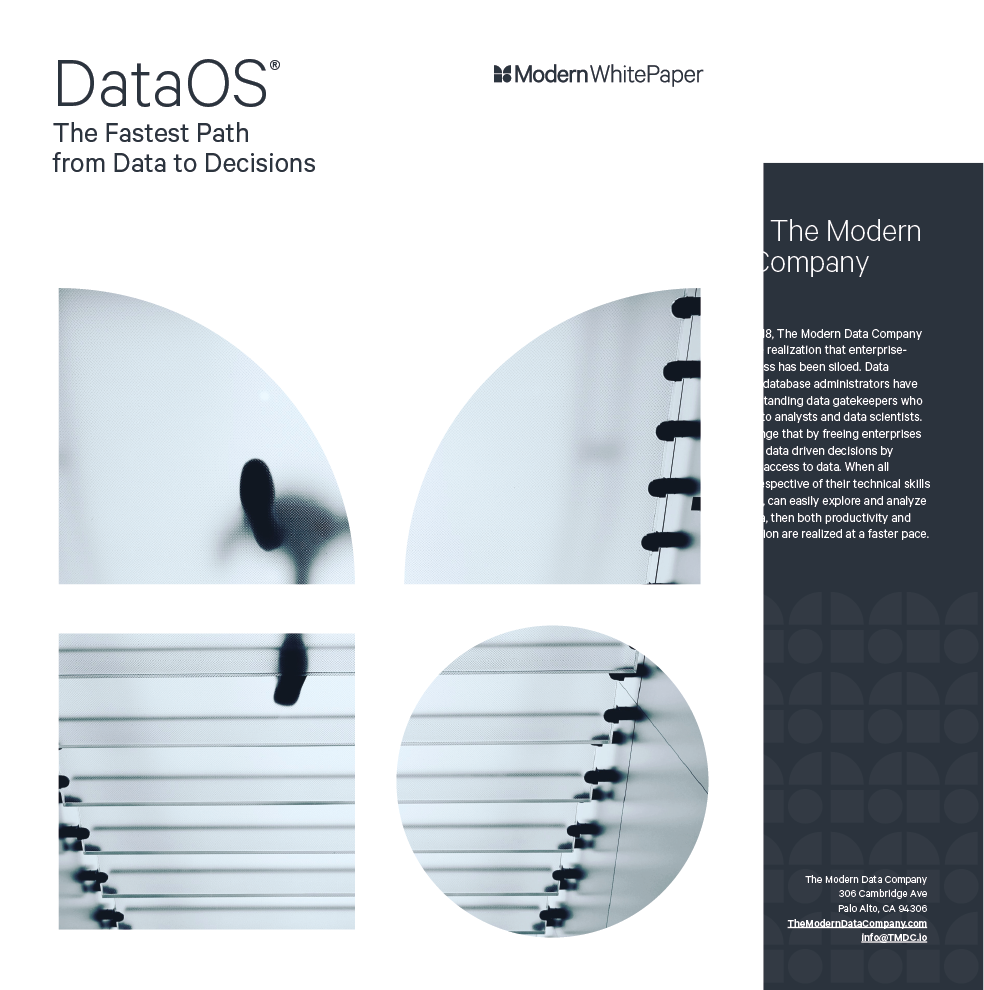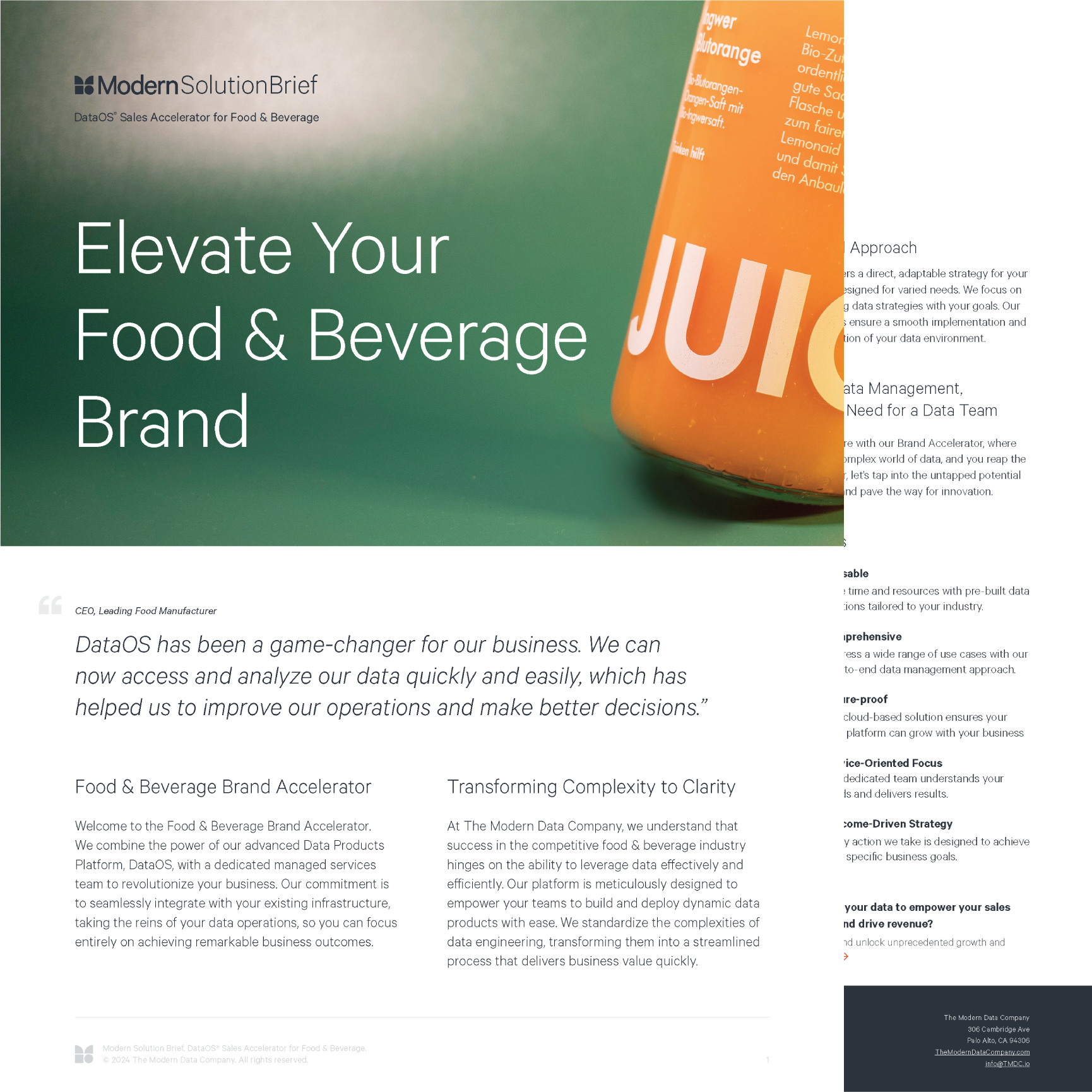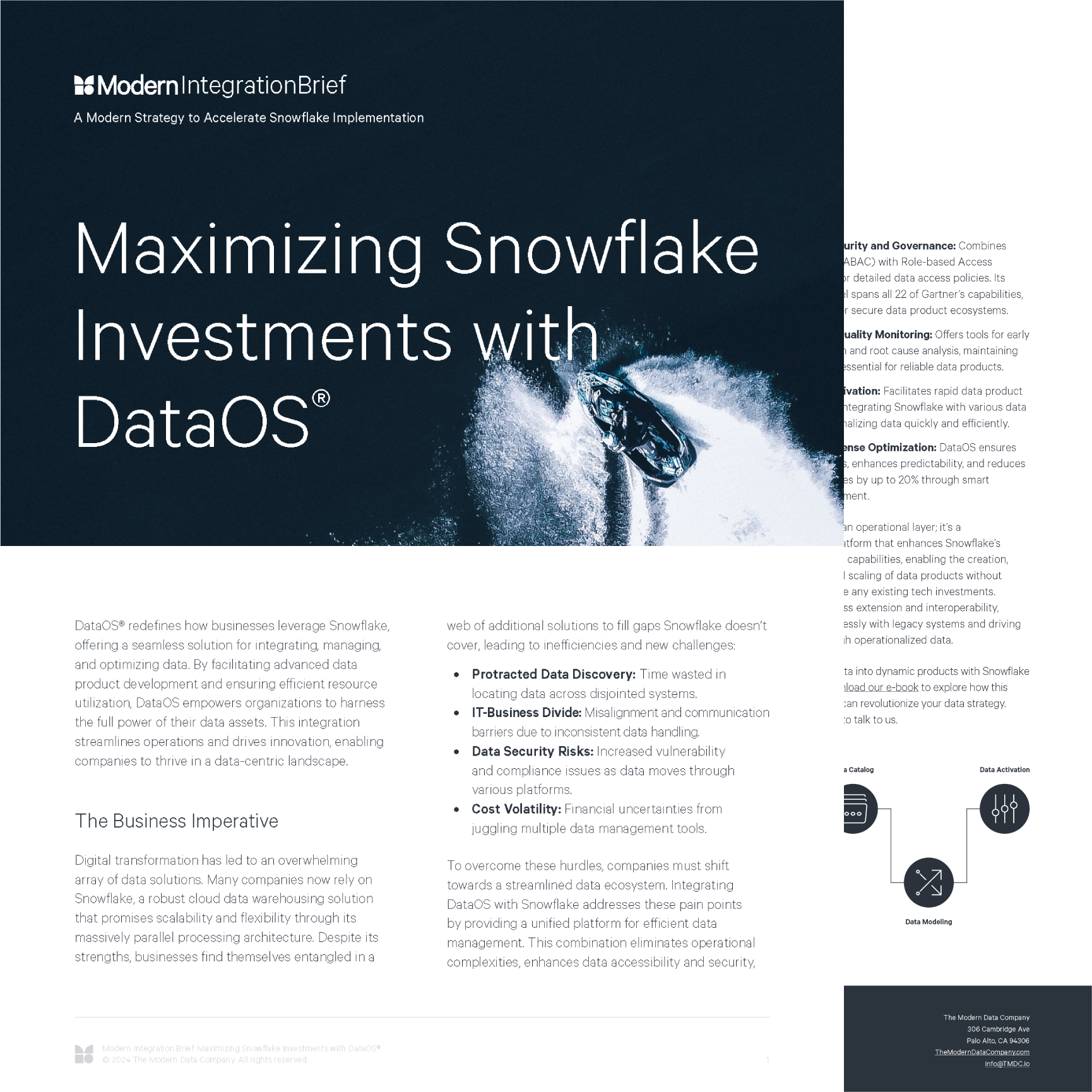
How to drive trusted decisions without changing your current data infrastructure.
Learn more about DataOS® in our white paper.
The conditions for strong, data-driven decision making don’t come only from IT. The business side also needs a plan to ensure that data becomes a central part of business operations and that they don’t unknowingly tie the hands of their best innovators. C-suite and other decision-makers should take confident and forward-thinking steps towards crafting a bulletproof data strategy in partnership with all stakeholders and IT expertise.
Bulletproofing a data strategy from the technology side is critical to business survival. However, a truly data-driven organization also receives support from company decision-makers. Bulletproofing a data strategy from this angle includes several spheres:
The C-suite can no longer get by without understanding the current state of data science. A truly bulletproof strategy will require IT talent as well as the support and vision of major decision-makers within the company. Business leaders and decision-makers can take these three steps to ensure a bulletproof data strategy from the business side.
As companies open up data to stakeholders, a certain amount of exploration can foster the types of questions that make data analysis great. Encouraging team members to explore data pays dividends:
Team members can build skills and learn to ask questions that benefit the company. Everyone can also learn their way around available data and get comfortable turning to it to make decisions and collaborate intelligently.
The old way of handling governance meant that data stayed locked behind strict security protocols. Departments asked questions or requested data insights and waited until IT could return with an answer. The only other place with the kind of data access IT received was the boardroom, which made it difficult to foster a data culture. Unlocking data posed too great a risk, which meant companies left valuable insights undiscovered.
Today, companies need data in real-time to facilitate data-driven decision-making across the enterprise. With the next era of granular governance control, decision-makers can approach governance at the atomic level. They can free data for stakeholders without risking its integrity or security.
A data fabric, for example, allows proactive management of data without setting onerous restrictions. It offers decision-makers the chance to create efficient security policies and to maintain observability. Attribute-based security controls also keep data flowing while maintaining GDPR and CCPA compliance.
Collaborative intelligence is a necessary part of fostering the data culture that allows great analysis to thrive. Once decision-makers open their data up, IT can collaborate with sales and marketing, for example, on initiatives to improve customer retention, or with the product team to gain better direction for a proposed product update.
There are a few necessary steps to advance collaboration:
Collaborative intelligence sparks a great deal of innovation because it taps into the expertise of the team. Data is theoretical until it comes in contact with experience, and collaborators can ask better, deeper driving questions and explore data for insights that might have been missed.
As data becomes a more integral part of the entire organization, business leaders can support tech initiatives by opening up the company to collaboration and freeing up data for stakeholders. Allowing team members access to the data they need in real time, investing in tools that knit together all the different technology solutions and data sources, rethinking governance and security — all of these things enable business leaders to create an environment of innovative data analysis. The insights generated will be a competitive differentiator and allow a data-driven business model to emerge.
Schedule a session with Modern to see exactly how DataOS can transform your business insights and shorten the curve from data to value. Contact us today.
Be the first to know about the latest insights from Modern.

For today's Chief Data Officers (CDOs) and data teams, the struggle is real. We're drowning in data yet thirsting for actionable insights. Traditional data architectures, with their centralized data lakes and batch-oriented processing, are like bloated, slow-moving...

Ever wondered why building data-driven applications feels like an uphill battle? It's not just you – turning raw data into something meaningful can be a real challenge. The process of extracting, transforming, and loading data, not to mention the subsequent phases of...

The Modern Data Company has been given an honorable mention in Gartner's 2023 Magic Quadrant for Data Integration. In honor of this achievement, we'd like to re-introduce ourselves for 2024 and let everyone know why DataOS has been and still is one of the most...

In the intricate and competitive world of wine and spirits, leveraging data effectively has become a cornerstone for success. Yet, this task is often hindered by a range of challenges, such as the lack of in-house data expertise, the high costs associated with data...

Problem & Opportunity Statement There have been constant shifts in alcohol drinking trends across the global markets, and with each new year, a new set of alcohol beverage consumption statistics, trends, and predictions follow. According to Distilled Spirits...

To view this protected post, enter the password below:

Unleashing the Power of AI with Data Products Traditional project-centric data management stifles AI innovation with siloed data, slow workflows, and limited reusability. Enter the era of data products: self-contained modules of data, logic, and infrastructure that...

A Pan-Industry Revolution with DataOS® Unleash the revolution with Data Products powered by DataOS®. These self-contained data units, bursting with actionable insights, offer unmatched flexibility, agility, and compliance across all sectors. From personalized customer...

Cross-Sell Accelerator for Credit Cards In the hyper-competitive BFSI landscape, maximize credit card cross-sell potential with data-driven precision. Cross-Sell Accelerator empowers you to forge deeper customer connections with personalized offers, optimize...

Maximizing Snowflake Investments with DataOSUnleash the true potential of your Snowflake investment with DataOS®, the data product platform that seamlessly integrates, empowers, and elevates your existing infrastructure. Build robust data products faster, eliminate...